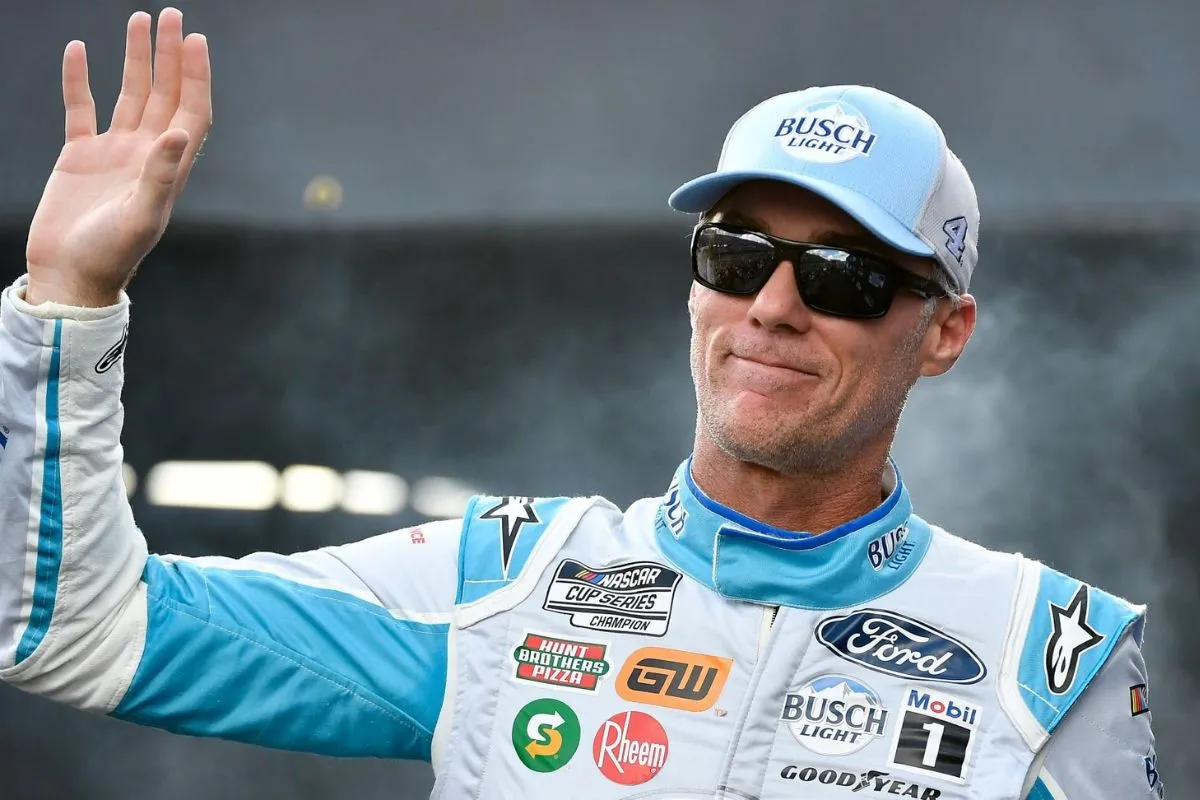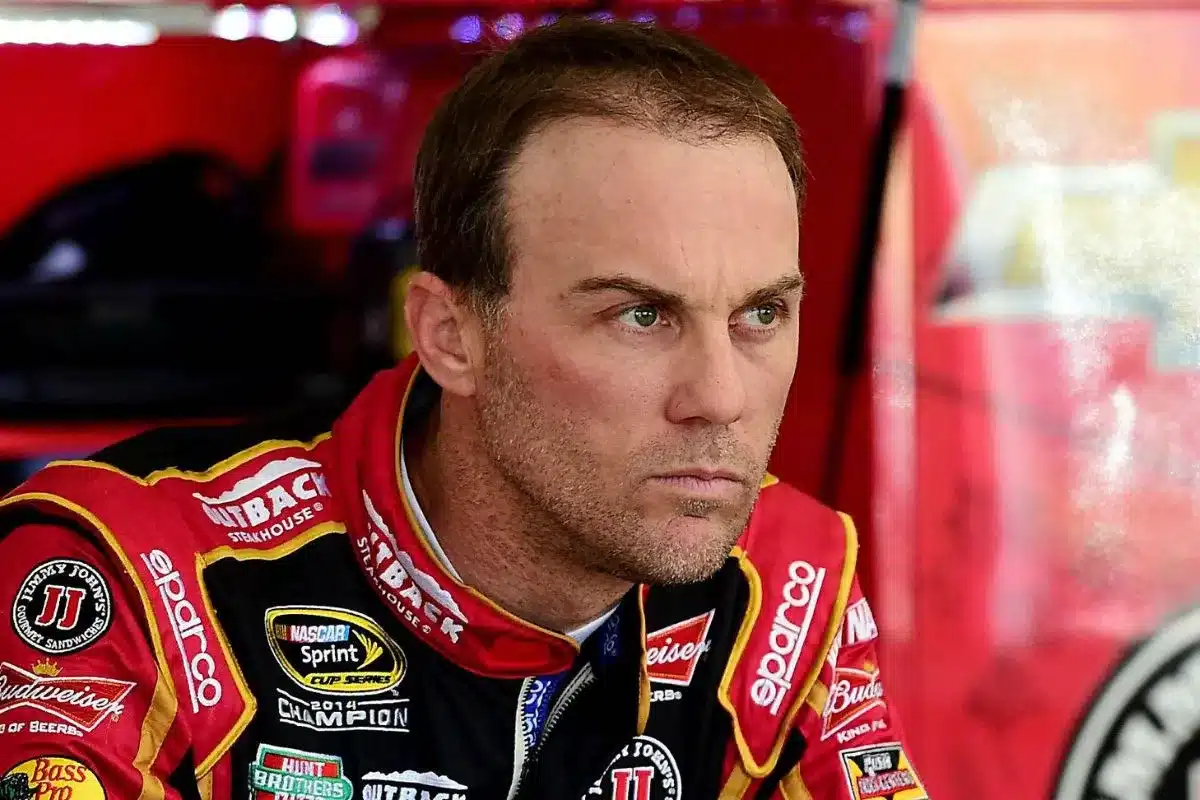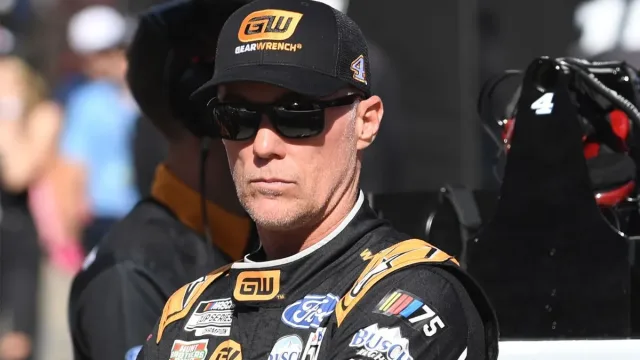Kevin Harvick Uncovers Bristol’s Tire Secrets: Kevin Harvick’s insights into Bristol’s tire secrets reveal the critical role of balancing speed and preservation on the demanding track. His revelation could reshape NASCAR strategies. Harvick’s perspective on tire wear at Bristol illuminates the challenges faced by drivers and teams, emphasizing the need for precise tire management. The game-changing insight he uncovers could revolutionize how racing teams approach tire strategy, marking a significant shift in NASCAR’s competitive landscape. Learn how Harvick’s revelations could lead to new tactics and opportunities for growth in the sport.
Key Takeaways
- Bristol’s abrasive surface and high banking create extreme tire wear challenges.
- Proper tire management is crucial for success at Bristol Motor Speedway.
- Addressing tire wear incidents can lead to advancements in NASCAR strategy and technology.
- Harvick advocates for a proactive approach to problem-solving in NASCAR.
- Leveraging tire wear challenges can drive innovation and improve competition in the sport.
Kevin Harvick’s Perspective on Tire Wear at Bristol
Kevin Harvick offers a seasoned perspective on the intricate nature of tire wear at Bristol Motor Speedway, shedding light on the strategic challenges posed by the track’s unique conditions. The former NASCAR Cup Series champion explores the extreme tire wear witnessed at the Food City 500 race, emphasizing the unexpected and demanding nature of the track. Harvick’s insights underlines the critical role tire management plays in the outcome of races at Bristol, where adaptability and quick adjustments are principal for success.
Harvick’s experience and understanding of Bristol’s tire wear dynamics reveal a deeper layer of complexity in NASCAR racing. The track’s abrasive surface and high banking put immense stress on tires, causing them to degrade rapidly during a race. This rapid tire wear introduces a strategic dilemma for drivers and teams, requiring them to strike a delicate balance between speed and tire preservation. Harvick’s perspective highlights the need for drivers to possess not only exceptional racing skills but also a keen sense of tire management to navigate the challenges posed by Bristol’s unique conditions.
“I love the fact that the tires wear out and your setup matters. Not one word about aero push and aerodynamics and short-track packages. All we heard about is, ‘My car needs to handle better,’ ‘My tires are wore out.”

Harvick’s Take on NASCAR’s Response to Tire Wear
In examining NASCAR’s response to tire wear challenges, Harvick offers a perspective that underscores the potential for the sport’s advancement through a focus on tire management strategies and setup adjustments. During his podcast discussion, Harvick emphasized the importance of addressing tire wear incidents as opportunities for growth rather than setbacks. He believes that NASCAR’s handling of tire wear, particularly the incident at Bristol, aligns with the desired direction of the sport, emphasizing the vital role of tire management in racing success.
Harvick’s take on NASCAR’s response to tire wear reflects a proactive approach to problem-solving within the sport. By highlighting the significance of proper tire management and setup adjustments, he advocates for a strategic shift towards enhancing performance through these avenues. This perspective not only shows Harvick’s deep understanding of the technical aspects of racing but also emphasizes the potential for innovation and improvement within NASCAR.
Furthermore, Harvick’s insights suggest a broader implication for the sport’s evolution. By recognizing tire wear challenges as integral components of racing dynamics, NASCAR can exploit these moments to drive advancements in strategy and technology. Harvick’s perspective serves as a catalyst for reevaluating traditional approaches to tire wear, signaling a progressive mindset towards enhancing competition and elevating the overall racing experience for fans and participants alike.
“If we went back today, the teams would adapt and adjust, they’d change the camber, they’d change the toe, they’d change their setup…this is exactly what we wanted and asked for. I just hope we know how we got here. We didn’t expect to be here, and here we are.”
Race day looks a bit different nowadays 👔 pic.twitter.com/pMmhebKbzq
— Kevin Harvick (@KevinHarvick) March 19, 2024
NASCAR’s Reluctance to Increase Horsepower
NASCAR’s hesitance to embrace a horsepower increase amidst calls for heightened engine power by drivers like Harvick raises questions about the sport’s strategic priorities and potential impacts on racing dynamics. While Harvick is vocal about the need for more powerful engines to spice up competition, NASCAR’s focus on elements like aerodynamics and cost containment has led to a reluctance to substantially boost horsepower. This stance has sparked debates within the racing community about the direction NASCAR should take to enhance the on-track product.
To better understand the implications of NASCAR’s stance on horsepower, let’s consider the following table:
|
Pros |
Cons |
|
Enhanced racing excitement for fans |
Increased costs for teams |
|
Potential for more challenging driving |
Concerns about safety with higher speeds |
|
Differentiation from other racing series |
Impact on parity among teams |
|
Showcasing driver skill and bravery |
Technical challenges for manufacturers |
As the table illustrates, the decision to increase horsepower in NASCAR cars is not a simple one. While it could lead to more thrilling races and showcase driver talent, concerns about costs, safety, and competitive balance must also be carefully weighed. NASCAR finds itself at a crossroads, balancing tradition with the evolving demands of fans and competitors like Harvick.
NextGen Cars and the Quest for More Power
The push for increased engine power in NextGen cars is gaining momentum within the NASCAR community as drivers and fans alike seek to inject more excitement and competitiveness into races. With the advent of NextGen cars and advancements in race viability, the discussion around enhancing engine performance has taken center stage. Kevin Harvick, a prominent figure in NASCAR, has been vocal about his advocacy for engines with more than 1000 horsepower. He contends that investing in engine power has the potential to revolutionize the sport, making races more dynamic and thrilling for both drivers and spectators.
The quest for more power in NextGen cars represents a shift towards embracing innovation and pushing the boundaries of performance in NASCAR. By challenging the traditional norms of engine regulations, drivers like Harvick are calling for a reevaluation of NASCAR’s approach to engine power. The allure of faster cars with increased horsepower promises to deliver a heightened level of competition on the track, elevating the overall racing experience.
As the sport evolves and adapts to new technologies and demands, the pursuit of more power in NextGen cars underscores a commitment to progress and excellence in NASCAR. Embracing this quest for enhanced engine performance could pave the way for an exhilarating era of racing that captivates fans and redefines the competitive landscape of the sport.
“I still think it’s gotta have more than 1000 Horsepower. For the life of me, I cannot understand why we wanna keep spending millions of dollars on CFD and wind tunnels changing, changing parts and changing pieces.”
View this post on Instagram
Harvick’s Call for Change in NASCAR’s Engine Rules
Harvick’s strong advocacy for increased engine power in NASCAR underscores a pressing need for a re-evaluation of current regulations. His thorough analysis of the sport’s engine dynamics reveals a pivotal opportunity for NASCAR to revamp its approach to engine rules. By championing a shift towards more potent engines, Harvick aims to inject a new level of excitement and competitiveness into NASCAR races.
The call for change in NASCAR’s engine rules reflects Harvick’s deep commitment to advancing the sport. He envisions a future where enhanced engine power not only thrills fans but also challenges drivers to showcase their skills in a more demanding environment. Harvick’s insights highlight the importance of staying aware of technological advancements to guarantee NASCAR remains a premier racing series.
Moreover, Harvick’s proposal aligns with the broader trend of innovation driving success in competitive sports. Embracing more powerful engines could attract new audiences, increase in viewership, and solidify NASCAR’s standing in the racing world. As a seasoned driver with a keen understanding of the intricacies of NASCAR, Harvick’s push for change carries substantial weight within the racing community.
“The engine cost hasn’t changed since we changed the engine rules. I don’t understand why we just don’t want them to blow the back tires of the car. It does not make any sense to me.”

News in Brief
Kevin Harvick’s insights into Bristol’s tire wear and NASCAR’s response shed light on the necessity for change in engine rules.
The hesitancy to boost horsepower and the quest for more power with NextGen cars underscore a crucial moment for the sport.
Harvick’s plea for modifications in NASCAR’s approach to tire management and engine regulations could result in groundbreaking advancements in the future of racing.
Our Reader’s Queries
Q: Did Kevin Harvick drive the 3 car?
A: The 2014 Cup Series champion boasts 60 wins, ranking 10th on the all-time list, taking over the No. 3 car after Dale Earnhardt’s passing in 2001. Once considered a brash agitator, Harvick has evolved into a prominent figure representing NASCAR’s next generation.
Q: Has Kevin Harvick ever won on a road course?
A: While not typically associated with road racing prowess, Harvick has found success on such tracks. His inaugural road course victory occurred at Watkins Glen International, where he outperformed future teammate and car owner Tony Stewart for the win.
Q: Does Kevin Harvick own a race team?
A: Kevin Harvick, Inc., known as KHI, is a racing team founded by former NASCAR Cup Series driver Kevin Harvick and his wife DeLana. DeLana is the daughter of former Busch Series driver John Linville
Also Read: Kevin Harvick Joins 1000HP Movement: NASCAR Fans Erupt!
